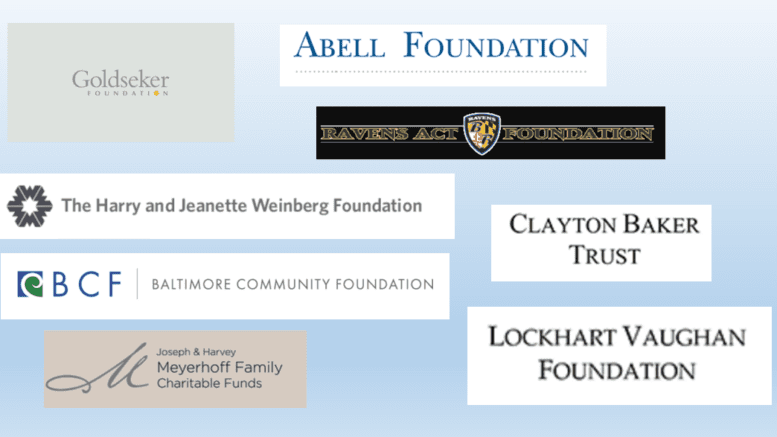Charitable foundations have played an important role at Patterson Park over the last two decades. For instance, the Friends of Patterson Park has secured funding from a variety of charitable foundations for projects that span from maintenance projects, capacity building and planning for large capital improvements.
Although charitable foundations have provided important support, foundation support has been variable and uncertain. While a charitable foundation may fund maintenance of a park asset in one year, it may decline to fund similar efforts in future years. In addition, relationships with different charitable foundations grow or diminish over time. While charitable foundations are important to Patterson Park, the lack of consistency in funding levels and long-term commitments make it difficult to rely on these charitable foundations as a constant revenue stream to fund maintenance and operations improvements made in Patterson Park’s Master Plan.
Some of the literature pertaining to charitable foundations provides a good overview of charitable foundation giving. There are a large variety of charitable foundations in the United States. In 2012, 86,192 charitable foundations existed nationwide with $715 billion dollars in assets and total grants of $52 billion for the year.[1] In Maryland, there were 1,457 foundations, with total giving at $843,673,564 in 2014.[2] Most foundations are small with “70 percent of all foundation assets . . . controlled by just 2 percent of foundations.”[3] Regardless of their size or influence, each foundation is different with varying goals, personalities, risk tolerances and cultures.[4] Similarly, the reasons foundations give are just as diverse. Some foundations give for purely altruistic purposes, while others are self-serving.[5] The most dominant purpose, however, is to create “large scale, lasting social change.”[6]
Most foundations set up “program areas” that confine the fields within which they plan to do their grant-making.”[7] These fields, are just as wide-ranging as the reasons for giving with 60% of foundation giving in the health, education and human services fields.[8] Given these statistics, the vast majority of foundations are not necessarily providing funding for program areas that pertain to Patterson Park. Relying on charitable foundations as a consistent source of funding for Patterson Park Master Plan projects over the long term is simply not a viable option.
[1] Foundation Center, Key Facts on U.S. Foundations 1 (2014), http://foundationcenter.org/gainknowledge/research/keyfacts2014/pdfs/Key_Facts_on_US_Foundations_2014.pdf.
[2] Foundation Center, Foundation Stats, Aggregate Fiscal Data of Foundations in Maryland 2 (2014), http://data.foundationcenter.org/#/foundations/all/state:MD/total/list/2014.
[3] Joel L. Fleishman, The Foundation, A Great American Secret 27 (2007).
[4] Fleishman at 28.
[5] Fleishman at 35-36.
[6] Fleishman at 39-40.
[7] Fleishman at 61.
[8] Foundation Center, Key Facts on U.S. Foundations 4 (2014), http://foundationcenter.org/gainknowledge/research/keyfacts2014/pdfs/Key_Facts_on_US_Foundations_2014.pdf.

Be the first to comment on "No. 6 – Charitable foundations are an unreliable source of income"